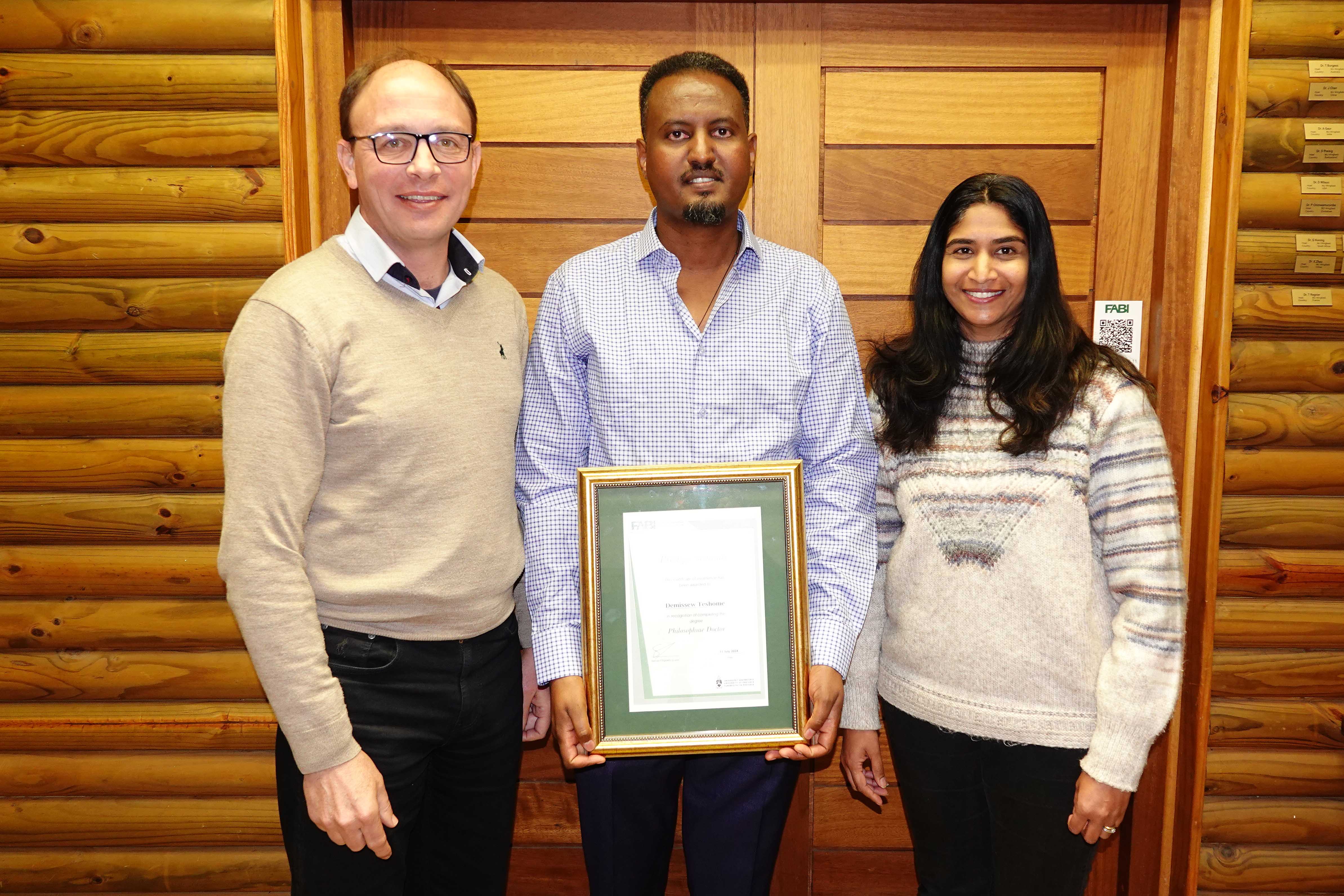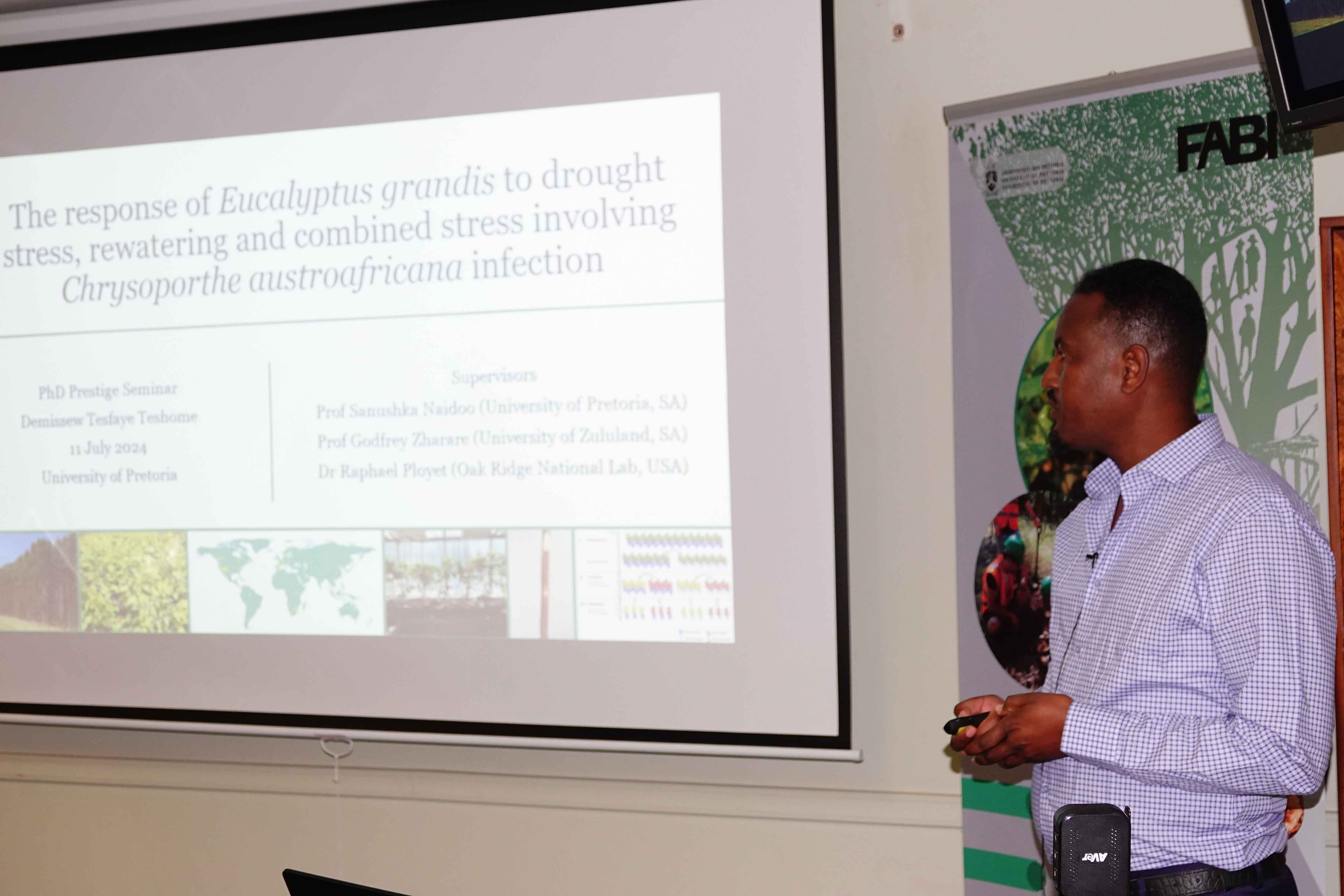Well done Demissew! 2024-07-19
Congratulations to Demissew Teshome on the successful completion of his PhD as part of the Eucalyptus Pine Pathogen Interaction (EPPI) research group. He presented his prestige Seminar “The response of Eucalyptus grandis to drought stress, rewatering and combined stress involving Chrysoporthe austroafricana infection” 11 July in a fully-packed FABI auditorium.
Prof. Sanushka Naidoo, Head of Department: Biochemistry, Genetics and Microbiology, and his primary supervisor, described Demissew as a “quiet leader” who has a very patient, deliberate and methodical way of doing things and who was always prepared to help others. He joined FABI in 2018 to start his PhD under her supervision, along with Prof. Godfrey Zharare (University of Zululand) and Dr Raphael Ployet (now at Oak Ridge National Laboratory, USA). The external examiners for his thesis were Prof. David Drew (Stellenbosch University) and Prof. Jong Hum Kim (Pohang University of Science and Technology, South Korea) while Dr David Nsibo was the internal examiner for Demissew’s thesis.
Climate change is exacerbating the impact of biotic and abiotic stresses on trees throughout their long lifecycle. Drought along with increasing numbers of pests and pathogens being introduced through increased global movement of people and international trade, can severely increase stress on trees. Previous studies have primarily focused on plant responses to single stresses but the response of plants to stress combinations, which they often face in the field conditions, have been suggested to be different from their responses to individual stresses.
Demissew’s PhD studied the Eucalyptus grandis - Chrysoporthe austroafricana interaction, as a model pathosystem for studying forest tree diseases to investigate combined stress responses. He conducted several greenhouse experiments to determine the impact of drought stress and rewatering and also the impact of pathogen infection with drought stress and subsequent rewatering. His study found that rewatering, following exposure to combined stress, triggers distinct transcriptomic changes that are different from both the delayed responses to the single stress of pathogen infection and recovery from the single stress of drought. This study showed that the trees prioritized stress responses, mainly involving the JA/ET and ABA-independent signalling pathways, during recovery from combined stress conditions at the expense of growth and carbon storage. However, he found transcriptomic evidence suggesting carbon starvation during recovery from combined stress.
But the changes in the abiotic environment, as in the case of drought stress and rewatering, could also affect the pathogen. Demissew found evidence suggesting that the pathogen may have maintained its metabolic activity and strengthened its cell wall under drought stress, implying prioritization of survival in the drought stressed host environment. However, some pathogenicity-related genes, including some cell wall degrading enzymes, were downregulated, suggesting that the increased disease progression under mild drought stress could be due to increased host susceptibility rather than enhanced virulence.




